07.23.2010 original published report
11.23.2010 repaired broken links
12.14.2010 update reflecting Richard C. Holbrooke’s death
06.20.2011 update reflecting OBL kill, ongoing political issues in the region
08.18.2011 update charts of coalition causalities, repaired broken links, formatting edit, added audio, video, PDF archive media
06.27.2012 updated/ replaced broken links
04.22.2013 labeled paragraph topics for reference.
09.16.2019 repaired broken video links.
09.16.2019 Trump Admin on Afgan peace talks & our take. See Point [43].
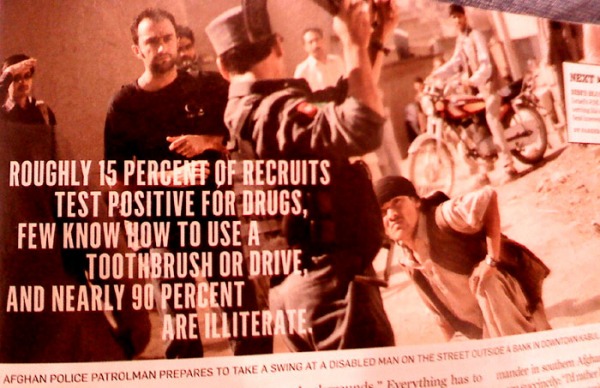
Afghanistan – an Expensive Exercise in Futility
original report written by Net Advisor™
EXCERPT:
The United States has a losing policy over Afghanistan and the leadership continues to think they can win at one of the longest and most expensive wars in U.S. history.Read the 34 page report (including updates) loaded with statistical data, history, photos, U.S. government and international documents. There are over 150 links backed by credible sources including links to major video documentaries.
See how over $1 Trillion of U.S. tax dollars are being used in Afghanistan, Iraq and Pakistan and what were getting in return for that. An in-depth comprehensive report written by Net Advisor™
[1] WASHINGTON DC. The United States has been at war in Afghanistan for 9 years this October 7th. In contrast, World War I lasted about 4 years, 4 months; Word War II 6 years, 1 day. The second “Iraq II” war has been just over 7 years. The 1st US- Iraq war in 1990 was called the “Gulf War” which was about 7 months long. The only longer war in U.S. history would be the Vietnam War which officially has been recalculated to 19 years and 5 months long.
The intent of the war in Afghanistan as far as my understanding was to capture or kill one person, Osama bin Laden. Conspiracy theories had previously circulated rumors that former President Bush found Bin Laden and was waiting to announce his capture before the 2004 election. As we have discovered the War on Terror is a lot bigger than just one person.
[2] U.S. Names Al-Qaida as Terrorism Focus
The U.S. has generally named Al-Qaida and the Taliban as their general target for the War on Terror. There are many other known terrorist factions operating throughout the world today, all potential threats [Source: U.S. Department of State, Foreign Terrorist Organizations List, as of 01-27-2012 (PDF)]
Al-Qaida (al Qaida) is suspected of:
– involvement in the October 2000 bombing of the USS Cole in Aden, Yemen;
– Conducted the bombings in August 1998 of the U.S. embassies in Nairobi, Kenya, and Dar es Salaam, Tanzania, that killed at least 301 persons and injured more than 5,000 others;
– claims to have shot down U.S. helicopters and killed U.S. servicemen in Somalia in 1993;
– conducted three bombings that targeted U.S. troops in Aden, Yemen, in December 1992;
– reportedly plotted to assassinate Pope John Paul II during his visit to Manilla;
– reportedly “plotted to assassinate President Clinton” in 1995.
— Source: Congressional Research Service 2004 Memo (PDF) (CRS.gov)
In August 1996, Bin Laden issued a Fatwa (titled and translated), “Declaration of War against the Americans Occupying the Land of the Two Holy Places.” (Source: PBS.org)
In February 1998, Bin Laden issued a second Fatwa declaring jihad (a holy war) against the West and Israel. This second Fatwa was reportedly signed, “Osama bin Laden, head of al Qaeda; Ayman al-Zawahiri, head of Jihad Group in Egypt…” and included several other Islamic terrorist groups. (Source: PBS.org)
The U.S. believes based partially on the terrorists’ own admission, that Osama bin Laden is linked to Al-Qaida and who claimed responsibility for the 9-11 attacks. The U.S. believes the master-mind of the 9-11 attacks was Khalid Shaikh Mohammed who was captured in Pakistan on a joint U.S. Intelligence-Pakistani led effort. (Source: Global Security.org, and PBS.org) Khalid Shaikh Mohammed is said to be of Pakistani-Kuwaiti nationality, not from Afghanistan (Source: Global Security.org).
The problem is we don’t know where all of Al-Qaida is located. They are all over the world, including in the United States, and other western countries.
“Members of Hezbollah, the Lebanon-based terrorist organization, have already entered the United States across our southwest border.”
— Source: House.gov Homeland Security Investigations Subcommitte, page 4; PDF version page 5.
Since allocating resources to hunt for a handful of small groups world-wide is just not feasible, we have used Afghanistan as base camp to fight the War on Terror.
Clearly the U.S. needs to increase, or rather implement (begin) an effective domestic (border) security to reduce the risk from future domestic terrorist attacks coming to the U.S. The problem is that U.S. leadership thinks they can win a war against persons whom they can’t seem to locate, and who live all over the world.
The U.S. has sought assistance from Pakistan, reportedly a known an Al-Qaida hideout. However the problem is the Pakistani government is just as corrupt as the Afghan government, and Pakistan has a high degree of anti-American views. (Source: USA Today)
[3] A Basic Look at Afghanistan’s Economic Standing:
Afghanistan Economic Statistics.
- Government Budget: $1 Billion
- Expenditures: $3.3 Billion
- Inflation Rate (2009 est) 30.50%
- Unemployment rate: 35% (2008)
- GDP per capita: $800 (2009 U.S. dollar equivalent)
- #1 Agriculture Product: Opium (Heroin)
— Source: CIA Fact Book
[4] Afghanistan’s Drug Trade
Drugs are a big problem that start in Afghanistan. The United Nations Office on Drugs and Crime published a 38 page report called Afghanistan Opium Survey in 2007. Amongst the UN’s findings:
- Afghan land is producing over 8,000 metric tons of opium per year. (p5)
- Afghanistan produces 93% of the world’s deadest drug (opium). (p5)
- The amount of Afghan land used for opium is now larger than the corresponding total for coca (cocaine) cultivation in Columbia, Peru and Bolivia combined. (p5)
- The Taliban-controlled areas produced 15,000 tons of opium from 1996-2000. (p6)
— Source: Afghanistan Opium Survey, United Nations Office on Drugs and Crime
A separate 102 page co-study published by the U.K. Department of International Development and the World Bank in 2008 suggests to rid the opium from Afghanistan would take 20 years and (UK) £1 Billion (about $1.52 Billion U.S. dollars depending on current currency conversion rates). (Source: Guardian.UK)
[5] The Trillion Dollar War
Secretary of State Hillary Rodham Clinton is expected to announce a $500 million funding plan approved by the Democratic Congress in 2009 that will triple non-military support to Pakistan. The plan includes $7.5 Billion total over the next 5 years. Thus U.S. tax payers will be providing water, energy, agriculture and health care in attempt to gain political support (Source: CBS News (PDF)).
Now the $7.5 Billion is a drop in the well compared to the $33 Billion President Obama is seeking to fund another 30,000 troops later this year (2010), plus another $4.5 Billion in foreign aid and civilian operations in Iraq and Afghanistan (Source: Reuters).
[6] The Cost of War in Afghanistan and Iraq
The cost of war is typically measured in lives and dollars. Of course the true costs of war are much deeper than that. There is the psychological impact of war, long term health costs, disability, regional public relations with the host country; on-going monitoring, rebuilding efforts, etc. The war in Afghanistan just from a financial perspective has been a costly one.
“Congress has approved $345 billion so far for the war in Afghanistan, which the United States invaded to fight al Qaeda and topple the Taliban after the September 11, 2001 attacks. The nonpartisan Congressional Budget Office, which produced the figure, said about $22 billion has gone for Afghan-war-related activities in other countries.”
— Source: Reuters
The current costs per U.S. active military in Afghanistan range from $500,000 to $1 million – each. (Source: Reuters)
According to the Congressional Budget Office (CBO), the U.S. has spent over $708 billion in the Iraq War alone.
“Some $708 billion has gone to the Iraq war so far, CBO says. But Afghanistan is becoming the more expensive battleground, as the pace of U.S. military operations slows in Iraq and quickens in Afghanistan.”
— Source: Reuters
Thus the costs of Iraq and Afghanistan is looking at over $1 Trillion dollars ($345 Billion for Afghanistan, and $708 Billion in Iraq thus far = $1.053 Trillion) (Additional Source: Washington Post) [Read More: Report: Costs of Major Wars, 06-10-2010].
With all this tax payer money flooding into these multi-decade-war-torn counties, one would think that we have it all together by now? We have sought to train locals in the host countries to takeover so the Westerns can leave.
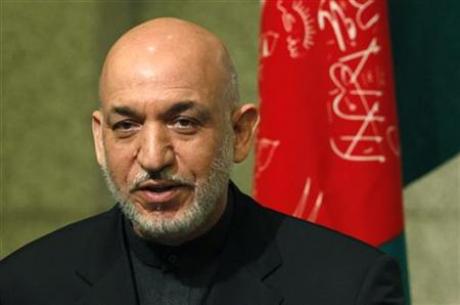
Training the Afghans Has Also Been an Expensive Exercise in Futility
Aside from the $17 billion the U.S. has given to Afghanistan for non-military aid since 2002; the U.S. has spent some $25 billion for “training and equipping the Afghan National Security Forces — the army and police.” President Obama wants to up this number to another $14.2 Billion for 2010-2011. (Source: Reuters)
Crooked Afghan Police Found Selling U.S. Ammo to the Taliban. Most Don’t Know How to Shoot a Gun or Use a Toothbrush.
— Sources: CBS News, Guardian.UK, Newsweek, NY Times, USIP.org
The money that the U.S. has plunked down in the region has not helped the U.S. move closer to ending the war, nor has it gained the support or changed the minds of Afghan locals about the U.S. Now, the corrupt Afghan government wants more control over the U.S. dollars raining in Afghanistan.
“Critics accuse the government of squandering millions in foreign aid, but President Hamid Karzai says most waste occurs on development projects outside official control, and he wants direct access to more of the $13 billion pot.”
— Source: Reuters, 07-12-2010
The U.S. has been trying to train Afghans to become “U.S. friendly” soldiers and police so the U.S. can leave. The U.S. government is somehow under the impression that if we just train Afghan people to become police and soldiers that they can defend their country from al-Qaida and further corruption from the Taliban over the Afghan government. Aside from the fact that this has not worked for 9 years and counting, a report earlier this year published by Newsweek, begs to argue that this effort has been a waste of tax payer money and an exercise in futility.
Some afghan police reportedly sell U.S. ammunition to the Taliban, which presumably will be used to fight against U.S. soldiers in Afghanistan.
“…crooked Afghan cops supply much of the ammunition used by the Taliban, according to Saleh Mohammed, an insurgent commander in Helmand province.”
— Source: Newsweek, 03-19-2010
War Funding: Basically it works like this.
1. U.S. borrows money to fund the war. (We borrow for everything, so this is just another future bill we have to pay.)
2. Tax payers are paying another bill that the majority does not want to eat. (Sources: ABC News, Newsweek, Washington Post)
3. We take billions of that money and buy guns and ammo to train the “friendly” Afghan police and army.
4. The Afghan police then sell the ammo to our enemy, the Taliban. (Source: Newsweek)
5. One can then logically deduct that the Taliban takes the U.S. ammo and uses it to try and kill U.S. soldiers.
A 2009 published report by Transparency International conducted an investigation for corruption in 180 countries. The 2009 report showed that Afghanistan ranked #179 of 180 of the most-corrupt nations in the world. Somalia managed to beat Afghanistan as the most corrupted country. (Source: Transparency International 2009 Report, Page 6 (PDF) (archive link))
Additional highlights of your tax dollars and U.S. Political Decisions used in Afghanistan: Note the quotations:
1. (U.S. funds to Afghanistan are) “poorly accounted for, according to a government audit…” (Source: Newsweek).
2. “Afghanistan’s police force is ‘an inadequate organization, riddled with corruption,’ says U.S. envoy Holbrooke” (Source: Wall Street Journal).
3. “United Nations poll last fall says more than half the Afghan respondents said the police are corrupt…(and) implicated in drug trafficking. (Afghan) villagers accused the local police force of extortion, assault, and rape” (Source: Newsweek).
4. “Roughly 15 percent (of U.S. trained Afghan police) test positive for drugs…Few know how to use a toothbrush or drive, and nearly 90 percent are illiterate” (Source: Newsweek).
5. “Since January 2007, upwards of 2,000 (Afghan) police have been killed in action—more than twice the figure for Afghan Army soldiers. U.S. officers say as many as half the police casualties were a result of firearms accidents and traffic collisions” (Source: Newsweek).
6. “Whether or not (Afghan police or army) recruits have mastered their subjects, almost everyone graduates. Even if they fail the firearms test, they’re issued a weapon and put on the street” (Source: Newsweek).
7. “(Afghan) police are central to Washington’s (Obama Administration’s) plans for getting out of Afghanistan” (Source: Newsweek).
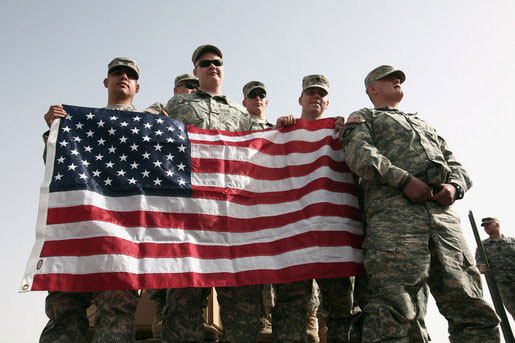
[7] Back to the Future: To Withdraw or Not to Withdraw.
Congress has been at odds over whether or not the U.S. should have a withdraw date. Armed Services Chairman Carl Levin, (D-MI) has suggested that a fixed withdraw date forces the Afghan government to take responsibility for their own security (Source: CNN).
The ranking Republican on the committee John McCain (R-AZ) has suggested that the Obama Administration should not set a specific date to withdraw. (Source: CNN) McCain called the Obama withdraw date a “political decision,” not based on any military strategy (Source: The Hill.com).
Obama said he would end the war in Iraq responsibility and begin that task as soon as he took office:
“Barack Obama and Joe Biden believe we must be as careful getting out of Iraq as we were careless getting in. Immediately upon taking office, Obama will give his Secretary of Defense and military commanders a new mission in Iraq: ending the war. The removal of our troops will be responsible and phased, directed by military commanders on the ground and done in consultation with the Iraqi government. Military experts believe we can safely redeploy combat brigades from Iraq at a pace of 1 to 2 brigades a month that would remove them in 16 months. That would be the summer of 2010 – more than 7 years after the war began.”
— Source: Senator Barack Obama (2008) (additional related stories CBS News, 07-20-2008)
Then in February 2009, President Obama re-indicated that he would end the Iraq War by August 31, 2010. (Source: CS Monitor) By December 2009, President Obama set a (new) withdraw date to get troops out of Afghanistan: July 2011 (Source: Los Angeles Times, 12-04-2009).
“(President Obama is) …signaling an end of Iraq combat missions by Aug. 31, 2010, Obama is compromising between his campaign promise to withdraw within 16 months – showing his willingness to listen to his military commanders, some of whom had pressed for a later deadline.”
— Source: CS Monitor
Notice the key phrase: “signaling an end of Iraq combat missions,” and the date “Aug. 31, 2010.” Now notice what seemed as a logical excuse given for the withdraw delay: “(Obama is) showing his willingness to listen to his military commanders” (Source: CS Monitor).
Now, hop back in our new $80 billion Obama Motors Green Car, and pretend we are traveling back in time to 2003. Yes, this is where sarcasm is coming. We are now on board the USS Abraham Lincoln with then President Bush who is speaking on the flight deck of this aircraft carrier.
“…my fellow Americans, major combat operations in Iraq have ended.”
— President George W. Bush (Speech on the USS Abraham Lincoln, 05-01-2003) (Source: CNN)
Yes, Johnny, I see you have raised your hand.
Johnny: ‘Um, didn’t Obama say the same thing that Bush said about 6 or 7 years ago?
Answer: “Yes.”
Johnny: ‘So why isn’t anything done?’
Answer: “Class open your books to “Politics 101″ for today’s lesson.”
Like his predecessor, the Obama Administration also seems to have difficulty in communicating mixed messages to the public.
While the President plans to INCREASE troops and funding to the Afghanistan war in later 2010 and 2011, the Vice President seems to think that the U.S. is on the way to withdrawing a “a couple of thousand (troops)” – a year from now (Source: CNN). Again, notice the key words here: “may withdraw” and “a year from now.” This is a non-committal speech.
So the U.S. is going to add 30,000 new troops now, then a year from now maybe a couple thousand will come home. The net is still a 28,000 troop increase over the next year, not a decrease. Vice President Joe Biden did come to the reality table by acknowledging that there still will be over 100,000 troops in Afghanistan a year from now (Source: CNN).
The UK has said it may begin withdrawing its troops from Afghanistan starting in 2011, but that effort may not be complete until 2014 (Source: Reuters).
Despite ranking democrats wanting a withdraw date, the facts are they have been and are currently planning to increase troops and place billions of tax payer dollars to the region. The Administration can’t argue that they plan to end a war by increasing military strength and pumping billions of dollars to the cause. That by any definition is called an escalation of war, not withdrawing or ceasing a war. Thus, the semantics used by the Obama Administration trying to convince the public and media that the “Left” is anti-war could not be further from the truth when you just simply look at their actions, not their political rhetoric.
If the Obama Administration could expedite a withdrawal decision in this area on Iraq and Afghanistan, estimates suggest it could save $1.1 Trillion off the Federal Budget over the next 10 years. That savings could pay for the health-care bill for the next decade assuming the numbers on health-care are correct to begin with; or we could allow major tax cuts for Americans to help end the recession, or pay down the U.S. debt, what a concept.
“A speedier withdrawal of U.S. troops from Iraq and Afghanistan would shave $1.1 Trillion off the budget in the next decade, a new congressional budget projection says.”
— Source: Army Times
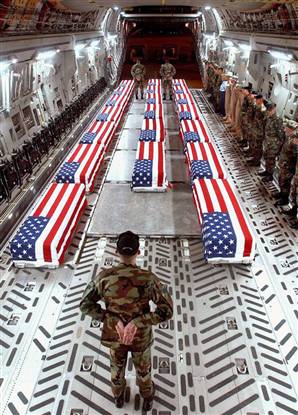
[8] Casualties of War
The U.S. alone has suffered over 5,500 killed in action (KIA) in Iraq and Afghanistan (Source: Washington Post) (Map: CNN). In contrast, there were 2,976 killed as a direct result of 9-11 (Source: wikipedia.org).
Although military operations have been winding down in Iraq beginning in 2008, and fortunately so have the casualties. But soldiers killed in action in Afghanistan have been rapidly increasing as Obama sends more troops to the war (Data Source & Charts below: icasualties.org).
Iraq Coalition Military KIA (updated to July 2011)
| Year | US | UK | Other | Total |
|---|---|---|---|---|
| 2003 | 486 | 53 | 41 | 580 |
| 2004 | 849 | 22 | 35 | 906 |
| 2005 | 846 | 23 | 28 | 897 |
| 2006 | 822 | 29 | 21 | 872 |
| 2007 | 904 | 47 | 10 | 961 |
| 2008 | 314 | 4 | 4 | 322 |
| 2009 | 149 | 1 | 0 | 150 |
| 2010 | 60 | 0 | 0 | 60 |
| 2011 | 44 | 0 | 0 | 44 |
| Total | 4474 | 179 | 139 | 4792 |
Afghanistan Coalition Military KIA (updated to about Mid-August 2011)
| Year | US | UK | Other | Total |
|---|---|---|---|---|
| 2001 | 12 | 0 | 0 | 12 |
| 2002 | 49 | 3 | 18 | 70 |
| 2003 | 48 | 0 | 10 | 58 |
| 2004 | 52 | 1 | 7 | 60 |
| 2005 | 99 | 1 | 31 | 131 |
| 2006 | 98 | 39 | 54 | 191 |
| 2007 | 117 | 42 | 73 | 232 |
| 2008 | 155 | 51 | 89 | 295 |
| 2009 | 317 | 108 | 96 | 521 |
| 2010 | 499 | 103 | 109 | 711 |
| 2011 | 298 | 31 | 71 | 400 |
| Total | 1744 | 379 | 558 | 2681 |
A recent study suggested that some 1,074 Afghan civilians were killed and over 1,500 injured during the first six months of 2010 due to the prolific violence in that country (Source: BBC.UK and ARM.org).
[9] Not paying Attention to History?
The U.S. should have learned from 9 failed years in Afghanistan by the Soviets, or at least read up on the last 172 years of war in Afghanistan.
Afghanistan has been at war (starting with Britain) since at least 1838 – that’s 172 years running, and still nothing has changed.
— Source: onwar.com
In December 1837, Afghanistan fought off the British in what was said to be an “unmitigated disaster” during what was known as the First Anglo-Afghan War (Source: onwar.com).
The Second Anglo-Afghan War began in 1878 after the British were concerned that Russia would attempt to take India from Britain and use Afghanistan as a “stepping stone” to achieve that goal. After Russia sent an envoy to Afghanistan, the British sought a diplomatic solution. The Afghan government initially resisted so the British invaded Afghanistan, again (Source: About.com: 19th Century).
On or about 1919, what was then the Soviet Union provided military and financial aid to Afghanistan to fight British control in the region in the Third Anglo-Afghan War. At the time, the British maintained control over Afghanistan as they deemed the country to be a “threat.” The British won that war in what has been called a tactical victory but suffered twice as many causalities as did the Afghans who were less armed, and in fewer numbers to fight the British. (Source: wikipedia.org)
Russia had long sought to control Afghanistan, and increased aid to Afghanistan. After rebels attempted to overthrow the Afghan government, the Afghan government requested more military hardware from the Soviets. Eventually the Soviets sought to fight the anti-communist rebels and invaded Afghanistan on December 27, 1979 (Source: wikipedia.org).
This invasion occurred during the Cold War. Concern for the spread of Communism in the region, then President Jimmy Carter made the Soviet invasion costly by ordering the CIA and its resources to provide various financial, military, advisory and other support to the anti-Communist Afghan rebels (Source: wikipedia.org).

Congressman Charles Wilson (book/movie) was instrumental in seeking 3rd party financial and military support for the anti-communists rebels in Afghanistan. The U.S. did not send any troops to the war as direct involvement with the Soviets could risk a bigger conflict. The Soviets reportedly had 30,000 troops fighting in Afghanistan, and eventually sent a force of 100,000 troops, coincidentally close to the same number of troops the U.S. have sent to Afghanistan.
Result: The Soviets completely withdrew from Afghanistan in 1989 (Source: wikipedia.org).
Soviet-Afghan Casualties
Of the 100,000 Soviet troops in Afghanistan, more than half were killed or injured.
“15,000 Soviet soldiers were killed and 37,000 wounded,” thus a total 52,000 out of 100,000 or 52% were killed or wounded.
— Source: infoplease.com
Although with U.S. covert help to support the anti-communist rebels, the Afghans suffered over 1 million deaths by the Soviets, and some 5 million people became displaced refugees to neighboring countries. After the war, Afghanistan was divided into internal conflict which eventually gave rise to the Taliban (Source: infoplease.com).
Soviet General Victor Yermakov spent 2 years commanding his army from 1982-1983 in Afghanistan. Yermakov said in a 2009 interview:
“They (the Afghans) didn’t trust us. They won’t trust you.”
— General Victor Yermakov, USSR (on the Soviet-Afghan War) Source: Newsweek, 12-11-2009
Further, Russian Ambassador Zamir Kabulov also served in Afghanistan, who is quoted saying,
“We tried to impose communism. You are trying to impose democracy,” he says. “There is no mistake made by the Soviet Union that the international community has not repeated.”
— Russian Ambassador Zamir Kabulov. Source: Newsweek, 12-11-2009
So the British could not occupy or hold Afghanistan; the Soviets could not occupy or hold Afghanistan; and unlike the British and the Soviets, the U.S. has no intent to occupy or hold Afghanistan.
[10] Déjà vu
Both the Bush and Obama Administrations have maintained unrealistic efforts on Iraq and Afghanistan. The public political commitments have not matched actions once the media has gone home.
In 2003, then President Bush declared victory in Iraq and an end to major combat operations in Iraq.
“major combat operations in Iraq have ended.”
— President Bush on Iraq, 05-01-2003 (Source: CNN)
Further,
“The battle of Iraq is one victory in a war on terror that began on September 11, 2001, and still goes on,” Bush said. He then highlighted successes in Afghanistan, citing the construction of roads, hospitals and schools” (Source: CNN).
As for Iraq, we did eliminate a destructive lawless tyrant (Saddam) who probably should have been eliminated a decade a ago, and we took out a number of others such as Uday Hussein, Qusay Hussein, Abu Abdullah al-Rashid al-Baghdadi, Abu Musab al-Zarqawi, and Abu Ayyub al-Masri whose supported the tyranny and global terrorism.
Next, Afghanistan can hardly be called a “success;” a mess maybe, but not a success. I would argue that the U.S. public did not seek to use American tax dollars to support a social ideology in Afghanistan to build “roads, hospitals and schools.” We went there, as we were told, to fight the War on Terror; to capture or kill the Taliban, and Al-Qaida. The U.S. could use some improvement on its own roads, hospitals and schools. As we read on we’ll see what happens when the U.S. attempts to implement its social projects in Iraq and Afghanistan.
[11] Build it, and they Will… do Nothing or Destroy it?
The U.S. discovered after spending billions of U.S. tax dollars on building basic infrastructure in this first case, Iraq, we forgot to tell the Iraqis how to operate and maintain them. The U.S. was also not able to prevent others from destroying what we built for Iraq’s benefit.
“the Bush administration spent tens of billions on fantastical development schemes: roads, schools, hospitals, electricity-generation stations, sewage-treatment facilities and irrigation systems. Inspectors-general found that nearly all of this infrastructure and equipment fell into hopeless disrepair because Iraqis didn’t know how, or care, to keep them up. Insurgents destroyed the others.”
— Source: SF Gate
President Bush must have left the Kool-Aid in the White House refrigerator as the Obama Administration is using the same blueprint to create similar infrastructure. The Obama Administration also is seeking to train people in Afghanistan, but the problem is nearly 90% of the Afghan people are illiterate (Source: NPR.org). Under Obama’s leadership, the U.S. tax payer funded construction efforts in Afghanistan have not done any better than they did in Iraq.
“David Kilcullen, an adviser to the military in Afghanistan, described another problem. Villagers in remote areas welcome Western soldiers or development officers into their town to build a bridge or a school, but as soon as the foreigners leave, the Taliban return. They then declare the villagers to be quislings and kill them. While they’re at it, they destroy the bridge and burn down the school.”
— Source: SF Gate
[12] Afghan Contract Flipping Scheme
In November 2009, both House Speaker Nancy Pelosi (D-CA) and Secretary of State Hillary Rodham Clinton suggested that Afghanistan will not get any more civilian aid (money – billions of U.S. tax dollars) unless we (the U.S. Government) can have some assurance from the Afghan government that this money won’t be diverted toward more corruption. While this is happening, contractors hired to build infrastructure in Afghanistan have reportedly been flipping (reselling) those U.S. contracts to other builders and so on until there is hardly any money left in the contract to build as it was originally intended.
“Corruption in development aid is largely invisible until a school building falls down, a road crumbles. Only then do development officers learn that Afghan contractors “flipped” the construction contract, selling it to another builder after taking a 10 percent cut of the funds. The buyer then flipped it again and perhaps again, leaving so little money for the actual builder that the final product is so shoddy that it soon collapses.”
— Source: SF Gate
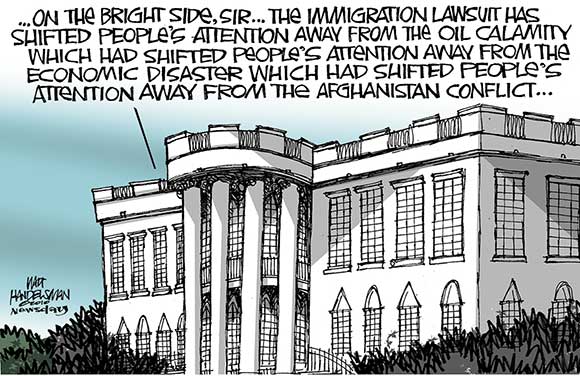
[13] Official U.S. Policy in Afghanistan
Officially the U.S. policy in Afghanistan is, “to disrupt, dismantle, and eventually defeat al-Qa’ida and to prevent their return to either Afghanistan or Pakistan.”
— Source: White House.gov, 12-16-2010
[14] Befriending the Afghans
Aside from farming, construction, and other tasks the U.S. has set forward, the Obama Administration has given a new objective to our troops as part of the mission in Afghanistan. That mission includes winning the support and cooperation of the Afghan people (Source: PBS.org Video).
U.S. troops effectively have a split objective of running a public relations (PR) campaign. Fighting a war while befriending the Afghans, and trying not to accidentally shoot unintended targets is a good way to get you killed in combat. Use of hesitation in combat is risky.
Solders are trained to act instinctively, not sit around while being shot at and figure whether they should shoot back or not. In any war, there is going to be collateral damage. No one wants innocent Afghans to be killed or injured; and likewise no American wants their troops to fight a war with one arm tied behind their back while using conflicting objectives.
U.S. soldiers are trained for one primary objective: To defeat an enemy. If the Obama Administration thought that public relations (PR) was the solution in Afghanistan, then perhaps removing the nearly 100,000 soldiers and sending in 100,000 PR experts from Madison Avenue might be a better strategy.
At the same time the U.S. has resisted to deal with the huge cultivation of drugs in Afghanistan – “the world’s largest heroin poppy supplier.” Reason being: The growing of drug crops are a leading source of Afghan farmer’s livelihood. How can we ask for their support and cooperation if we take away their (drug) money? (Source: Obama’s War (2009), a Frontline documentary, PBS.org. If unable to view related video below, please See “July 2009, New Mission in the South” and reference the video feed at 14:33 to 16:38).
[15] See Video 1:
PBS.org Frontline: Obama’s War(broadcast date 10-13-2009) (Original Video Link) [55:30]
[16] See Video 2:
U.S. Policy in Afghanistan: A Conversation with Richard C. Holbrooke at the Council of Foreign Relations (Original Video Link) (record date: 12-15-2009) [1:01:56]
[17] Problems with the Obama White House Plan: Objectives Not Realistic. Richard C. Holbrooke, Special U.S. State Department Representative for Afghanistan and Pakistan said the following points where noted below during a December 15, 2009 U.S. policy discussion about Afghanistan at the Council on Foreign Relations (CFR.org).
[Media Choices: Transcript (direct link), PDF Transcript (local), Audio MP3, YouTube Video (also directly above)].
“We are not going to try to eliminate every member of the Taliban for several reasons — neither achievable nor necessary nor are they all devotees of Mullah Omar or al Qaeda.”
— Source: Richard C. Holbrooke Special U.S. State Department Representative for Afghanistan and Pakistan, speaking at the Council of Foreign Relations (Transcript)
The next question should be, how many are we going to eliminate? How many are we not going to go after or leave to continue their rein? What is the criterion the U.S. is using to measure success in the capture or killing of terrorists in this region? No one bothered to ask these questions.
[18] The U.S. thinks they can implement a fair and legal justice system in Afghanistan.
“The Taliban’s greatest calling card when they came to power in the mid-1990’s was the lack of an effective and open and fair justice system. And that’s still a problem we need to deal with, and it’s one of our major programs. And a couple of my colleagues here work very aggressively on the rule-of-law issues.”
— Source: Holbrooke, (ibid) (Transcript)
The next question should be has Afghanistan ever had a “fair and legal justice system?” History has shown Afghanistan never had a fair system, let alone self-sustainability. Yet, after 172 years after the British Empire, and the Soviet failure in Afghanistan, suddenly the Obama Administration thinks it can create a legal system where the Afghans will suddenly follow and comply.
This also assumes the new rule of law will apply to the corrupt Afghan government, the corrupt Afghan police, the Afghan Drug Lords, the Taliban and of course the terrorists. Remember that about 90% of the Afghans are illiterate. So teaching them a rule of law is going to be just slightly harder than teaching them how to use a toothbrush. Thus the Obama Administration ignores these historical facts, and thinks that part of the solution in Afghanistan is just establishing U.S. imposed legal system?
[19] The problems seem to exist more in Pakistan, not Afghanistan as far as al Qaeda leadership goes.
“The leadership of the hard core is, as we’ve already said, in Pakistan.”
— Source: Holbrooke, (ibid) (Transcript)
As said earlier, the U.S. is spending over $300 Billion in Afghanistan, wants to increase funding and increase troops in there, but that is not where the problems are? We know the problems are more in Pakistan, so we are sending more money and troops to Afghanistan?
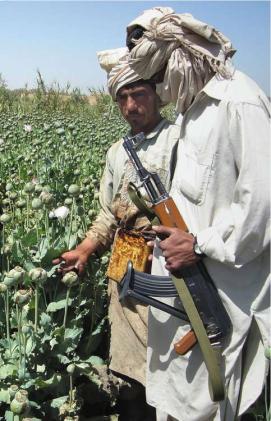
[20] Despite America’s so Called Policy on the War on Drugs, Afghanistan Gets an Exception.
“We ended eradicating (destroying) poppy crops. We were just driving farmers into the hands the Taliban.”
— Source: Holbrooke, (ibid) (Transcript)
So the U.S.’s global War on Drugs is exempted in Afghanistan, despite being the world’s largest grower/ supplier of opium (heroin). (Source: Global Research.org) In 2001 alone, the DEA said the Taliban profited on these Afghan poppy (opium/heroin) drug sales from $100 million to $1.2 Billion. (Source: ABC News) This dollar sales in Afghan drugs is up over 30 times from 2001 to 2008 on the DEA’s lowest estimate, and has nearly tripped on the DEA’s highest estimate. The Taliban is using this drug money in part to fund their war against the U.S. and support international terrorism.
“The opium industry is largely funding the Taliban”s war budget and is a major source of revenue for criminal groups and terrorists in Afghanistan… The export value of opium, morphine and heroin for Afghan traffickers (was still about) $3.4 billion in 2008.”
— Source: The United Nations, 11-27-2008
We also know that this Afghan drug trade plays a big role is keeping the Afghan government and police corrupt and has helped the Taliban come back in strength due to sales of drugs to fund terrorism.
“…the poppy trade has played a critical destabilizing role, and police in bankrolling the resurgence of the Taliban.”
— Source: United States Institute of Peace (How Opium Profits the Taliban, a 44 page report; P1 Summary, Parr 3)
Next,
“The Obama administration has largely ceased the eradication of opium crops – a practice that angers local farmers. However, the alternatives – developing other crops and attacking high-level traffickers – also drive up opium prices, increasing funds to the Taliban.”
— Source: Financial Times.UK (PDF), 07-08-2010
[21] The U.S. – Afghan policy is being influenced by illiterate drug farmers.
If you just destroy the (drug) crops located in about 7 provinces in Afghanistan now according to the Financial Times (PDF), then you will not be “increasing funds” to the Taliban or anyone. There will no longer be any crops or at least fewer crops to make money from.
Using the FT’s argument, let’s say that all the crops are destroyed and there is one poppy seed left to supply the worlds demand for drugs. If you follow FT’s logic, then that one poppy would sell for more than $3.4 billion? Because that is how much the UN reports the Taliban, etc., are making per year from drug crops in Afghanistan. Of course this would not happen, but that is the rational the FT is suggesting. If for example, you cut say 70% of the supply, prices might go up, but the gross revenue from the sale of drugs would also drop accordingly.
Recall once again quoting Mr. Holbrooke, the U.S. is under the impression that if we stop the drug trade in Afghanistan, we will send Afghan farmers supporting the Taliban. What the Obama Administration fails to realize is that we are not in Afghanistan to seek support of the farmers. Gaining the trust and support from farmers won’t stop terrorism anywhere.
The Obama Administration needs to stop the funding of terrorism. If you cut off the drugs and money supply, you cut off their ability to pay people, buy weapons, fly on airplanes and hit buildings, etc.
The Administration is apparently not concerned about this, they are concerned about gaining some social agenda with the Afghan farmers, and they think that will solve our problems in Afghanistan.
[22] Congress is under the impression that new agricultural subsidies from U.S. tax payers will pave the way to revitalizing the Afghan economy and will reduce unemployment in Afghanistan.
“…if you get an agricultural economy revitalized, you’re going to start to withdraw the incentive, the attractiveness of the Taliban to some of these unemployed youths. So we’re going to revitalize agriculture. The Congress has backed us fully on this.”
— Source: Holbrooke, (ibid) (Transcript)
You have got to be kidding. Again, this is just another social agenda pet project that the U.S. thinks they can turn around a corrupt government, a drug producing population by way of farming other than drugs. The drugs are still there, they are still being harvested, they will continue to thrive, and provide money for terrorism if no one destroys those crops. Does the Obama Administration really believe that the terrorists will give up on their drug crops, and start growing carrots because of some Congressional funding?
[23] The Secret to Economic Prosperity and Jobs? Farming?
If the Obama Administration thinks that agriculture is a solution to unemployment and economic vitality in Afghanistan, then shouldn’t the U.S. become an agricultural society to lower unemployment and increase prosperity at home?
“…I start with agriculture because it is our top non-security priority (in Afghanistan).”
— Source: Holbrooke, (ibid) (Transcript)
The Obama Administration even has an senior advisor from the Department of Agriculture in Afghanistan.
“Hi. Good evening. My name is Otto Gonzalez. I’m the senior adviser for agriculture from the U.S. Department of Agriculture. We are focusing on working with USAID and the U.S. military on improving agricultural sector jobs and incomes and improving Afghan confidence in their government, particularly, the ministry of agriculture.”
— Source: Otto Gonzalez, Obama’s Senior Adviser for agriculture from the U.S. Department of Agriculture, speaking at the Council of Foreign Relations (Transcript)
Mr. Gonzalez is not going to solve the problems in Afghanistan either. The problems in Afghanistan are: The Taliban, Al-Qaida, the drug trade, corruption (Afghan government, police, their military), and those shooting at U.S. soldiers.
The Obama Administration does not need to address the social problems in Afghanistan. That is not the United States business, and it not realistic to think that the Administration can just turn Afghans over to an entire new economy, ideology, education system, change their laws and methods, let alone a history of behavior.
Again both the British tried this, and the Soviets tried this and both had better technology and more soldiers than the Afghan resistance and both failed. Now the U.S. is making its attempt to do the same. It’s great to be positive and try to turn 172+ years of history around, but one also needs to measure this with probability. Trees don’t grow to the sky, and there is not a pony in every backyard. The U.S.’s plan is ambitious at best, but the probability to achieve the Administration’s objectives are not in the realm in reality.
Even the left leaning Senator John Kerry (D-Mass.) said:
The Afghanistan strategy, “reaches too far, too fast.”
— Senator John Kerry (Source: ABC News)
[24] A Solution to the Afghan Drug Farming Problem
If, once again according to the CIA Fact Book, the average Afghan makes about $800 a year, and the U.S. is spending some $500,000 to $1 million a year per soldier, wouldn’t it be cheaper and safer to do the following:
A. Give each Afghan $900 a year (preferably for a fixed period of time) to grow something other than drugs. Tell them they cannot grow drugs anymore. If they do, they lose their subsidy, and the U.S. will burn their drug crops anyway. Now you have just given the Afghans a more profitable business, albeit a socialized taxpayer funded program. But this is still cheaper than the current Obama strategy, and it achieves a social and fiscal objective in Afghanistan, which should be pleasing the Obama Administration.
B. Tell the Afghans each year (drop leaflets from planes – probably using simple pictures) with a 15 minute or so lead time as a reminder well before any opium, or other drug harvest.
The picture might be a military aircraft firing and burning the drug crops but leaving the carrot and lettuce crops untouched. In words, it might be something like this:
‘We are going to burn your drug crops for violating the subsidy agreement. You have 15 minutes (or whatever) to leave the area before we burn the drug crops’ (or to that effect). Odds are the drug farmers will go running for cover. Then the U.S. follows up on schedule and firebombs the drug crops from the air. No ground troops necessary.
We monitor the crops via satellite and or via aircraft surveillance. This saves tax payers a minimum cost of $499,100 to $999,100 per year versus the cost of each ground troop. And ground troops can’t be shot at if they are not there, thus saving lives. The costs of surveillance and GPS target bombing will still be a huge cost savings compared to the current strategy. In the event we pick up military hardware in the area via satellite or via intel, we can take out the drug crops from Navy ships in the ocean (discussed in more detail later in this report), thus avoiding anti-aircraft attacks.
Bottom Line For this Solution:
1. Achieved a reduced risk to American lives.
2. Achieved a huge reduction in war costs.
3. Created a social objective. Not my preference, but the leadership wants a social objective, so here is one that is a cost savings verses the current strategy.
4. Reducing the level of drug crops in Afghanistan, reduces the cash flow from the sale of drugs world-wide, thus damaging terrorists’ ability to fund their operations.
In order to do this, the U.S. has to take a strong leadership position and not negotiate with terrorists, drug producers, or corrupt governments.
[25] The U.S.’s highest military priority is to train Afghan police and army, and as we know, that has not worked out too well.
“…the only priority which is higher (than Agriculture) is training the police and the army.”
— Source: Holbrooke, (ibid) (Transcript)
Afghanistan is not a pet project to start some Social Ideology. But the current Administration seems to think that a country has been at war at one time with three world powers (Britain, Soviet Union, and now the United States) using fewer people and less technology, can be socialized and won over with construction and farming projects. While these social projects are being developed war is still going on and reports point out how dangerous this is to civilians, let alone the military.
“Afghanistan is now so dangerous, administration officials said, that many aid workers cannot travel outside the capital, Kabul, to advise farmers on crops, a key part of Mr. Obama’s announcement in March that he was deploying hundreds of additional civilians to work in the country.”
— Source: NY Times, 10-11-2009
Why would anyone send civilians to advise Afghans how to farm when the country is in the middle of a violent war? They know how to farm. They have the largest opium production in the world. They grow lots of drugs. Planting grains and veggies is just not going to turn the war around, and it is putting civilians at harms risk.
[26] Building Foreign Infrastructure During A War
So we know that the current strategy over farming isn’t working too well. Now the Obama Administration has effective said, ‘let’s build something in Pakistan.’ Secretary of State Hillary Clinton visited Islamabad, Pakistan in July 2010. She said, ‘the US wanted to show it cared about ordinary Pakistanis, not just their support in the fight against militants.’ So, while the U.S. has its military firing at enemies in Pakistan, and aircraft is blowing things up, the U.S. is casually going to build “two hydroelectric dams” that are part of a $7.5 Billion aid package courtesy of the U.S. Congress (U.S. taxpayer) authorized in 2009 (Source: BBC News).
The U.S. did not start rebuilding homes and infrastructure in Hiroshima or Nagasaki before they dropped the bomb. They waited until AFTER, when? AFTER the war was over, and stable. Why would anyone build infrastructure DURING a war?
And Pakistan is not lacking in technology or know how. The country has modern buildings, a stock exchange and nuclear weapons. Not exactly a 3rd world country. Pakistan also has a big drug trade problem and it tends to be along the border associated with Afghanistan [Source: United Nations Office of Drugs and Crime (PDF)].
Pakistan is a significant transit area for Afghan drugs, including heroin, opium, morphine, and hashish, bound for Iran, Western markets, the Gulf States, Africa, and Asia; financial crimes related to drug trafficking, terrorism, corruption, and smuggling remain problems.”
— Source: CIA Fact Book
[27] Domestic Policy Issues: Don’t Hurt My Feelings
Since the 9-11-2001 terrorists attacks in the United States, government policy began a don’t hurt my feelings campaign. This was not officially labeled as such, but in practice that is how it works. Essentially, the U.S. wanted to assure that we don’t offend those who may be extra sensitive as the U.S. prepares battle in areas where the U.S. is generally not well liked. Arguably, the U.S. government and most of its people understand that the U.S. is not angry with peaceful people who coincidentally may share a particular religion or nationality. The U.S. is seeking the violent extremists aimed at causing harm to U.S. and friendly targets. That is all. Here is the official version:
“In his statements and speeches since Sept. 11, U.S. President George W. Bush has been careful to distinguish the members of Osama bin Laden’s al Qaeda organization and the Taliban, from the people of Afghanistan and Muslims of the world.”
— Source: Center for Defense Information (CDI.org)
President Obama, naturally has taken the same care in high sensitivity toward the Muslim community. (Source: U.S. News & World Report) This sensitivity campaign has been ongoing; however the President may have offended other Americans in his April 2010 speech in Cairo, Egypt with a statement such as this one:
“let there be no doubt, Islam is a part of America.”
— President Barack Obama, 2010 Cairo speech (Source: Fox News)
[28] Profiling at Airports
There has been continued controversy about profiling at U.S. airports as some say it unfairly singles out those who may be of a particular nationality (Source: ABC News).
Some people may have a hard time getting past this issue and focus on the bigger issue where the U.S. is at war with an enemy that does not play by the Geneva Convention Rules. Terrorists don’t care who they kill; their goal is to inflict terror (fear) into what they perceive is their enemy.
The U.S. is trying to fight a politically correct (“PC”) war by trying not to accidentally offend anyone in the process. One cannot fight a war if they are afraid that they might accidentally offend someone. Generally shooting at someone is going to be deemed offensive. People need to just realize that the U.S. is not targeting a race like Hitler did. The U.S. is just defending against extremists and terrorists seeking to cause major harm, and race should never be an issue.
As much as we now know that Afghanistan is a mess in every way, that is nothing new. It has been this way for almost 200 years. And for the U.S. to think they can change that with social projects and American ideology is just not going to work in Afghanistan. I do not see how Afghanistan serves in the U.S. economic or strategic interests. All we have to do is occasionally monitor and destroy whatever the terrorists try to create and secure our borders so they can’t walk in the back door when we are not watching.
[29] The Bigger Problem: Pakistan
According to Dr. David Kilcullen, former advisor to General McChyrstal, Al Qaeda has based its operations in Pakistan. In a 2009 interview, Kilcullen stated something that should get people’s attention:
“Al Qaeda’s policy is the overthrow of the current system in Pakistan to be replaced by one controlled by Al Qaeda, and the acquisition of nuclear weapons, of which there’s 100 in the form of medium-range ballistic missiles in Pakistan.
So from an Al Qaeda strategic standpoint, Pakistan is a much more important strategic prize than Afghanistan.”
The U. S. has an official but reluctant green light to confront Al-Qaeda and the Taliban in Pakistan. The problem is the Pakistani government forbids the U.S. to fight the Pakistani Taliban.
“U.S. controlled Predator aircraft are known to have struck at least three sites used by al-Qaeda operatives. The moves followed a tacit understanding with Musharraf and Army chief Gen. Ashfaq Kiyani that allows U.S. strikes on foreign fighters operating in Pakistan, but not against the Pakistani Taliban, the officials said.”
— Source: Washington Post, 03-27-2008
How are U.S. soldiers going to distinguish the Afghanistan Taliban verses Pakistani Taliban? Neither group wears a uniform, nor do they have any distinguishing markings to identify them with one army or cause verses another; and neither group are members of the official army in either country. So U.S. soldiers basically have to forget the element of surprise, and just wait to be shot at before they can react.
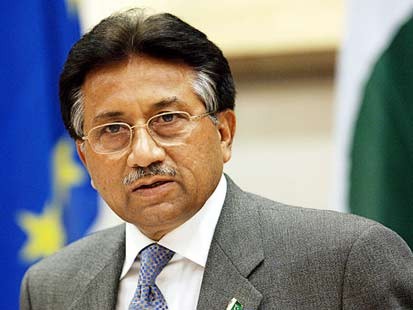
Pervez Musharraf, once a military general, took over Pakistan in a “nonviolent” military led coup d’état in 1999 (Source: BBC News). Five months after the U.S. stepped up combat efforts to seek enemy targets in Pakistan, Pervez Musharraf resigned from office as the Pakistani’s President was under impeachment pressure from the Pakistan Muslim League-N who wanted to charge Musharraf for treason. (Source: Guardian.UK).
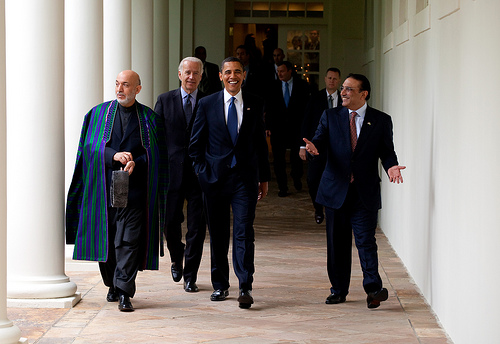
[30] Working with Pakistani Corruption
Pakistani’s latest President Asif Ali Zardari has been long been subject to controversy. In December 2009, President Zardari had been accused that he allegedly partaken $60 million from offshore companies that were paid in his name instead of handed back to the Pakistani national treasury (Source: NY Times).
Mr. Zardari had also served in a Pakistani prison for a total of 11 years. He had numerous allegations against him ranging from corruption, money-laundering, extortion, to murder. Mr. Zardari is also reportedly a resident of New York, USA and owns homes in Dubai and London (Source: Aljazeera.net).
Stemming from his alleged corruption from receiving financial kick-backs, Mr. Zardari has made it a crime to make fun of him. “Pakistanis who send jokes about Asif Zardari by text message, email or blog risk being arrested and given a 14-year prison sentence” (Source: Telegraph.UK). His predecessor, Pervez Musharraf reportedly, “took television broadcasters off air when he faced political opposition” (Source: Telegraph.UK).
Mr. Zardari reportedly has a net worth of $1.8 Billion (Source: Daily Pakistan). It is not exactly clear how Mr. Zardari made all his money and how much of it was from legitimate business. Investigators in Pakistan have accused Mr. Zardari and his deceased wife of “embezzling as much $1.5 billion from government accounts” (Source: NY Times).
Thus as it appears, the U.S. is dealing with two corrupt leaders in Afghanistan and Pakistan, throwing billions to both countries, and not making any real headway toward U.S. goals.
[31] The U.S. Needs a Clear and Realistic Path
Robert Gates, former CIA Director who served as Defense Secretary under Bush and now Obama has said that the U.S. needs “concrete goals” in Afghanistan and that the current goals are too broad (Source: NPR.org).
Whatever the U.S. goals are in Afghanistan, getting rid of the Taliban or Al-Qaida is not going to work by building infrastructure or cute social programs (health care, schools, roads, bridges, or irrigation systems to grow their drugs), and it will not get terrorists to stop fighting the U.S.
[32] Here is a Path:
Remove all troops, and supporting ops from Afghanistan and Iraq
No need to tell anyone but the commanding officers in the area. No need for an advanced press conference either. Just do it. The worst thing one could do in war is communicate your intention to the enemy. And;
[33] Secure the U.S. Borders
Note that securing the boarders are plural. That means Canada and Mexico. A fence or a camera is not security. If that were true, then build a fence in Afghanistan and place a camera every few miles and see if that stops the terrorists from crossing the border, halts the drug trade, or stop people from advancing elsewhere. Troops can defend the U.S. borders vs. drugs that come into the U.S., along with stopping illegal immigration that has also shown evidence of people from countries that are from known sponsors of terrorism.
[34] U.S. Has a National Security Risk at the Borders
The U.S. does not have to try and keep people out from those wanting a better life and who want to come to America. There is a bigger risk. Allowing potential terrorists into the U.S. as they are smuggled through U.S. borders.
The House Committee on Homeland Security Subcommittee on Investigations noted that 1.2 million illegal aliens were apprehended in 2005 alone, and 165,000 of those were from countries other than Mexico.
Approximately 650 were from “special interest countries,” or nations the Border Patrol defines as “designated by the intelligence community as countries that could export individuals that could bring harm to our country in the way of terrorism.”
— Source: House Committee on Homeland Security, Subcommittee on Investigations
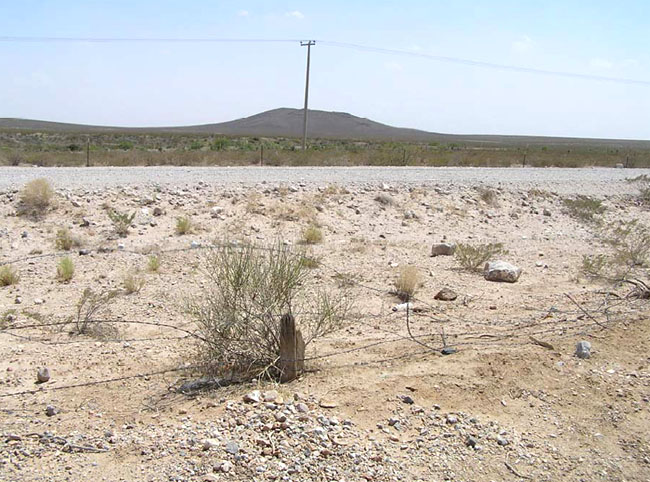
The House Homeland Security Report also stated that in 2004, that ICE agents arrested a woman named Neeran Zaia, a former Iraqi citizen and Basima Sesi. Zaia was “convicted by jury trial on three counts of bribery, seven counts of visa fraud, and one count of alien smuggling; she was sentenced to fifteen months of imprisonment.” (Source: Justia.com/ U.S. Court of Appeals Cases & Opinions)
The said Homeland Security Report also found a jacket with unique badges on the Texas border. Two of the badges (patches on the jacket) showed:
“an Arabic military badge with one depicting an airplane flying over a building and heading towards a tower, and another showing an image of a lion’s head with wings and a parachute emanating from the animal. The bottom of one patch read ‘martyr,’ ‘way to eternal life’ or ‘way to immortality.”
— Sources: U.S. Govinfo.about.com and House Committee on Homeland Security, Subcommittee on Investigations (photos: page 29 of actual report, page 30 in PDF format)
The report further stated that human smuggling organizations would bring aliens from the middle east to “staging areas” in Central and South America, then arrange transport into the U.S. or U.S. territories (page 29, parr 2 of the original report; page 30 in PDF version).
[35] The U.S. deported 769,266 people in 2008 alone including apprehended individuals from:
Afghanistan: 29
Algeria: 41
Egypt: 233
Iran: 98
Iraq: 118
Jordan: 291
Lebanon: 188
Libya: 11
Nigeria: 299
Pakistan: 494
Saudi Arabia: 71
Somalia: 66
Sudan: 46
Syria: 71
Yemen: 78— Source: Department of Homeland Security’s 2008 Yearbook of Immigration Studies. Page 92 of the original report, page 97 in PDF version.
So far in 2010, law enforcement authorities caught a number of individuals attempting to cross the U.S. border illegally. These were “special interest” persons that included, “two Afghans, five Algerians, 13 Iraqis, 10 Lebanese, 22 Nigerians, 28 Pakistanis, two Saudis, 14 Somalis and three Yemenis” (Source: The Herald Sun, NC). What the U.S. does not know is how many made it through the borders, and what intent they may have.
[36] How to Save Political Face
To save face, this is what the politicians can say to the press: “We are redeploying our Afghan troops to serve our national objectives.” Since politicians can often be vague on meaning, so just leave it as that. The message infers, ‘the U.S. is achieving its goals and doing something new.’ Of course we are not, but no one will ever publish this much detail information on the televised media let alone until it sinks in and Americans understand the issues.
[37] Use Spy Satellites, Manned and Unmanned Aircraft (Drones) to monitor movements in Afghanistan and surrounding areas
The U.S. can if they have not already integrate facial recognition software to try and allow computer technology to scan movements of people in the affected region. Those holding recognized weapons, especially assault rifles, or anti-aircraft missiles are probably up to no good, and should be observed and evaluated if a threat.
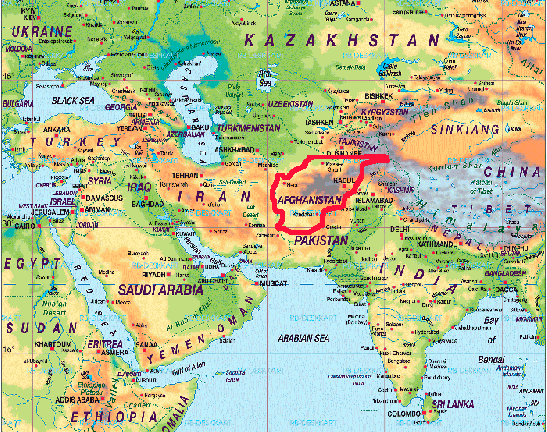
[38] Once a threat assessment has been identified and evaluated, a safer strategy to take out targets would be to use Navy ships
The U.S. Navy can use its all-weather long-range missiles such as the Raytheon Tomahawk® Land Attack Missile (TLAM).
The Tomahawk® is designed to hit single or multiple targets launched from ships or submarines and hit land targets via a GPS system. Navy ships can just sit in the Persian Gulf or Arabian Sea, and depending on which TALM version is being used, the Tomahawk® can strike targets up to 1,500 statute miles (2,500 km).
The Tomahawk® can use a range of target eliminating payloads both conventional and non-conventional (Source: Navy.mil).
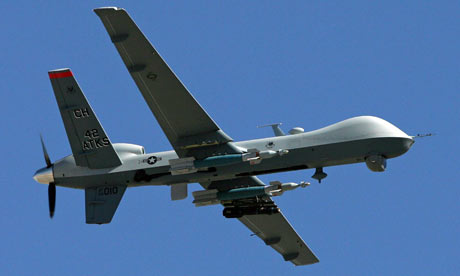
In addition to the Tomahawk®, the U.S. can strike enemy targets from the air using other various GPS-precision bombers, missiles and unmanned drones.
The Predator and Reaper Unmanned Aircraft (UMA’s) have had a number of incidences in technology and or human error. However despite some setbacks, drones have collected 24 years worth of intelligence video in Afghanistan and Iraq in 2009 alone (Source: NY Times). The craft can is still be deployed in the regions of need and provides surveillance and attack capabilities.
[39] Monitor, Track, and Evaluate Intel and Objectives. Modify as Appropriate
Throwing billions toward corrupt governments (Afghanistan & Pakistan) and nearly using upwards of 100,000 U.S. troops with split objectives is not how to run a war.
[40] Similar Strategies Could be Used in Pakistan
The U.S., NATO, and the UN need to persuade Pakistan to become a non-nuclear county and allow the UN under U.S. military oversight to dismantle and remove all WMD’s such as Pakistan’s nuclear weapon capabilities. This may prove difficult as India also has nuclear weapons, with shared technology provided by the United States and both countries have not exactly been friendly with each other (Source: Newsweek).
Additional text and video documentaries by Frontline® at PBS.org
- “Hunting Bin Laden” (11-2002)
- “Return of the Taliban” (10-03-2006)
- “Obama’s War” (10-13-2009)
UPDATES:
[41] 12.14.2010:
President Obama’s chief envoy to Afghanistan and Pakistan Richard C. Holbrooke as mentioned in this report, died December 13, 2010, at the age of 69 after complications from heart-related surgery. Mr. Holbrooke served under four Democratic presidents (Source: Washington Post).
[42] 06.20.2011:
As we have learned Osama Bin Laden had not been in Afghanistan reportedly for the last 5 to 6 years before the U.S. managed to track and kill him in Pakistan on May 2, 2011.
It appears that NATO had reason to believe Bin Laden was hiding in Pakistan back in at least October 2010 (Source: CNN). The CIA stated back in August 2006 that they believed Bin Laden was not in Afghanistan, he was in Pakistan, and that was the correct intelligence.
The government of Pakistan denied any knowledge of Bin Laden living essentially a block away from Pakistan’s equivalent of the U.S.’s West Point Military Academy (Pakistan.gov official Press Release). More updates at the end of this report. Follow U.S. policy and the costs.
The Obama Administration is now concerned about Afghanistan’s economy. A report released through bi-partisan members of Congress this month determined that U.S. efforts in the region contain “overly ambitious proposals, incomplete analysis, poor planning, weak coordination and inadequate follow-through by federal officials” (Source: Los Angeles Times, 06-17-2011).
We came to the same conclusion (however in perhaps more colorful detail) when we first published this report in July 2010.
The Obama Administration is concerned how dependent Afghanistan has become on U.S. and foreign aid and if they don’t keep dumping money into that corrupt, bankrupt, anti-American, heroin-producing, illiterate country that Afghanistan may go into depression by 2014.
“The Afghan economy is so dependent on (U.S.) military spending and international aid that it could plunge into depression in 2014 when U.S. forces are scheduled to depart…”
— Source: The Chicago Tribune
Not sure what the Administration’s thinking is, however I would argue that Afghanistan has been in depression since they named the country.
The Obama Solution: Negotiate with the Terrorists?
“The United States is in contact with the Taliban about a possible settlement to the war in Afghanistan.”
— Source: Reuters
The Obama Administration continues to believe despite 170 years of Afgan history (report above) that somehow they can bring peace to Afghanistan (that includes the drug lords, the corrupt government, the terrorists and the mostly illiterate population), and solve Afgan’s economic problems when the Administration has been unsuccessful to solving our own domestic economic issues.
The Obama Administration thinks that throwing borrowed money, and creating record deficits at problems will just fix everything, and will also get people to like you.
“There is this assumption that if we spend a lot of money on them, they’ll like us…I’m not sure what you gain by spending a lot of money that doesn’t produce sustainable and beneficial change.”
— Carol Lancaster, a former deputy administrator of the U.S. Agency for International Development, now dean of Georgetown University’s School of Foreign Service. (Source: Los Angeles Times, 06-17-2011 PDF)
We expressed our belief how the Administration is naive to think that it can solve Afghanistan’s issues. Even though the Obama Administration knows what they are doing in Afghanistan is not working, it doesn’t seem to matter. The Obama Administration continues to spend more money in Afghanistan anyway. It is as if the Administration is saying, “I will it to happen and so it will be.”
“The Obama administration spent $7 billion more in 2009 and 2010 and is slated to spend an additional $3.2 billion this year. But government studies indicate that the fundamental structure of the aid programs has not changed.”
— Source: Los Angeles Times, 06-17-2011 PDF
The U.S. needs to get a grip to reality and learn what the British Empire, and the (then) Soviet Union learned from their tenure in Afghanistan.
“We tried to impose communism. You are trying to impose democracy,” he says. “There is no mistake made by the Soviet Union that the international community has not repeated.”
— Russian Ambassador Zamir Kabulov. Source: Newsweek, 12-11-2009
Mr. President. After the OBL kill, the best political, economic and military strategy for the UNITED STATES of AMERICA is:
“Mission Accomplished. We are bringing our troops home now.”
Unfortunately, the Administration did not say this, and continues to implement the same social and economic policies in Afghanistan that have not worked, nor will work; and doing the same thing over and over again, will not produce different results.
[43] 09.16.2019:
The third U.S. President to address the now 18 year, U.S. Afghanistan War is Donald J. Trump.
President Trump was open to entertain peace talks with the Afghanistan Taliban in the U.S. in order to end the war.
Due to the September 2nd, and September 5th attacks by the Taliban that killed 159 people including one U.S. service member, Trump canceled the meeting.
One just can’t hold peace talks while the enemy is still trying to kill you.
We are not surprised by the recent Taliban attacks. Although the U.S. has the right intention to try and officially end the war and push for explicit written peace terms; we believe the history of the Taliban breaking every agreement ever made would undoubtedly repeat once again.
According to Reuters, the U.S. has decreased its troop presence from some 100,000 in 2001 to now 14,000. Trump is seeking to drop that number to around 8,600.
The U.S. could just pull remaining troops, then run satellite and drone surveillance which would be less costly and no risk to U.S. ground troops becoming targets.
In the event terror issues begin to develop or expand, the U.S. can address those issue from the air instead of the ground; or use other special strike teams as necessary.
We believe Afghanistan will never have peace as we have discussed for the last nine years (above).
About the author:
Net Advisor™ has long followed global events, developed military strategy games. While attending a major private university, wrote a research report titled: “International Terrorism: Challenge to U.S. Intelligence.” Net Advisor’s reports on National Security and Terrorism can be found here.
images/ video copyright by respective owner(s).
original article content, Copyright © 2010-2019 Net Advisor.org® All Rights Reserved.
NetAdvisor.org® is a non-profit organization providing public education and analysis primarily on the U.S. financial markets, personal finance and analysis with a transparent look into U.S. public policy. We also perform and report on financial investigations to help protect the public interest. Read More.


2 Trackbacks / Pingbacks
Comments are closed.